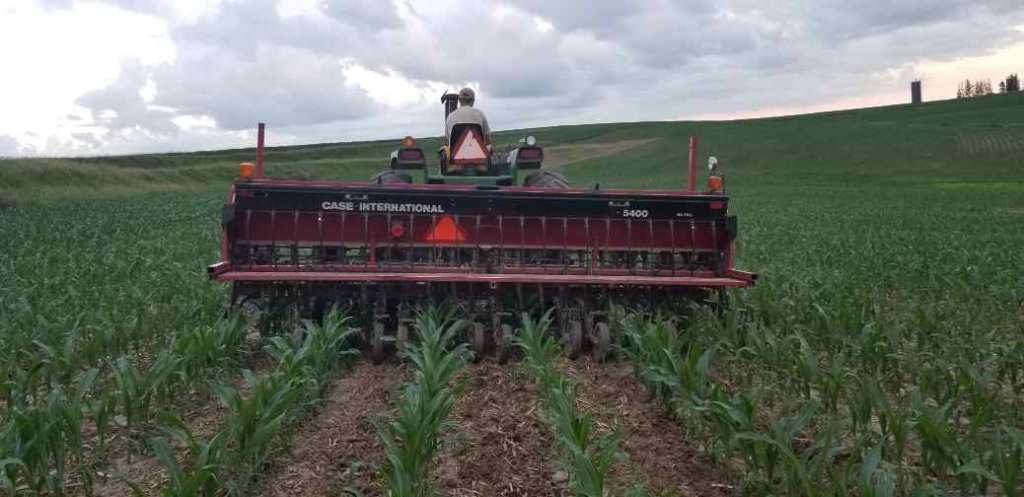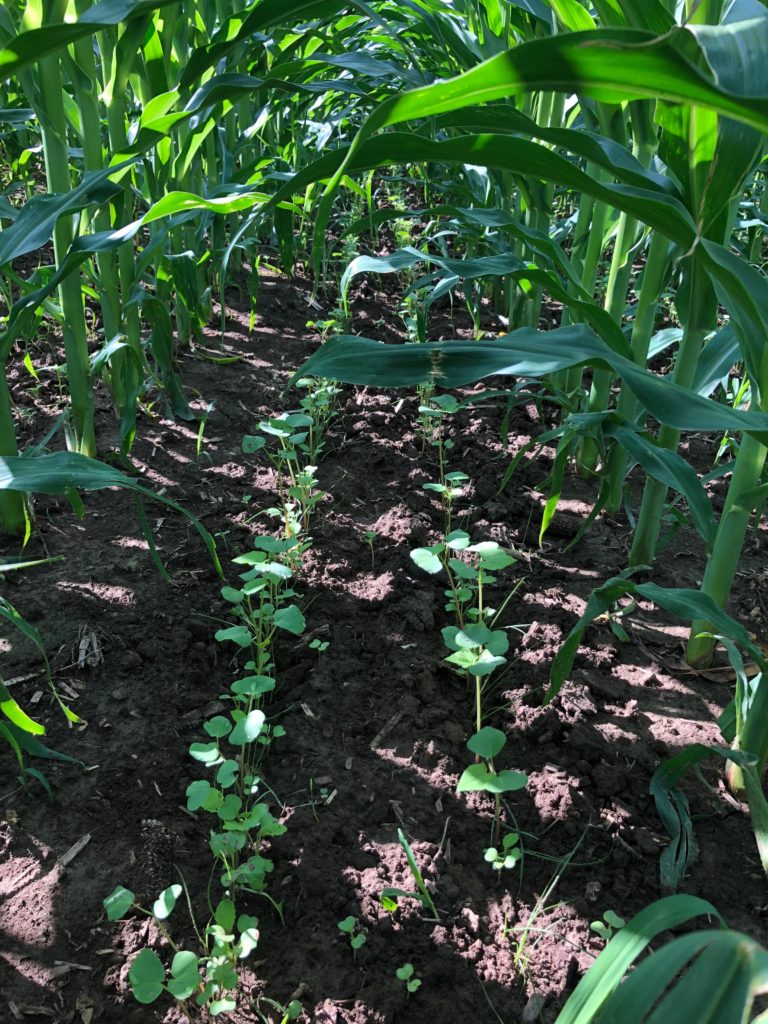There are many benefits to planting cover crops including reducing erosion, increasing organic matter, reducing compaction, improving nutrient cycling, and providing food for beneficial soil microorganisms. With short planting windows after corn or soybean harvest, some producers are looking at other methods of getting cover crops established. One option is interseeding the cover crop into a growing corn crop at V4-V6. The goal is to get the cover crop established early, while there is still light reaching the ground. If shade tolerant species are planted, the cover crop should go dormant when shaded out and then restart growth when the corn is harvested.
There are many ways to accomplish this. Tom Cotter from near Austin Minnesota presented at the Waukon NRCS office earlier this year and explained his different methods for interseeding. These include a gandy air box with 2 8-row rotary hoes, a vicon pendulum spreader, a fertilizer spreader, and a disc seeder. Drills can be modified to work as interseeders as well. Loran Steinlage from near West Union uses Dawn DuoSeed row units and has been interseeding for several years.
Aarik Deering, who farms near Postville, tried interseeding for the first time this year. Aarik used a drill that he has used for drilling rye cover crop in the fall as well as for drilling soybeans in the spring. He had to make some modifications to get it to work. He moved the tractor to 30” rows and moved the drill’s drive tire to run in between the rows as well. The drill is set up to plant 2 rows in between the corn with 8” row spacing. He removed the rows on the drill where the corn rows are and blocked the holes where the seed would meter out. The corn was at V5-V6 when he planted the cover crop on July 4th and 5th.

Aarik seeded a mix of cowpeas, annual ryegrass, purple top turnip, rapeseed, and buckwheat. His goals were getting cover established earlier in the growing season, adding some diversity, and increasing soil health. He is hoping the cover crop will provide some late season grazing for his cows as well.

When planting cover crops so early in the season, there may be concerns about the cover crop stealing nutrients from the corn plants, but thorough research has shown little to no negative impact on corn yield when the cover crop was interseeded after V3. When interseeding cover crops, it is important to ensure that the pre-plant herbicide program doesn’t kill the cover crop, so it takes some additional planning. Also, many of the common cover crop species, such as cereal rye and other cereal grains, do not survive the shade. Annual ryegrass is one of the top performing grasses. Brassicas like collards, kale, turnips, and radish tend to be relatively shade tolerant. Legumes like red clover, crimson clover, and hairy vetch also perform fairly well.
Farmers tend to be innovators and figure out ways to modify equipment to make things work. If seeding cover crops after corn or soybean harvest has left you frustrated these last few (wet) years, consider trying interseeding next year. Make sure you plan an herbicide program that will work with the cover crop and plant shade tolerant species. If you would like more information, contact the Waukon NRCS office at 563-568-2246 ext. 3 or stop by the office at 635 9th St NW.